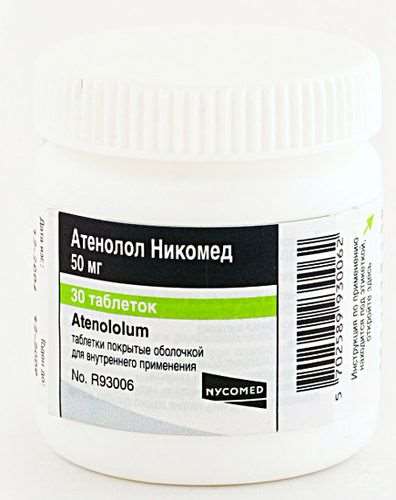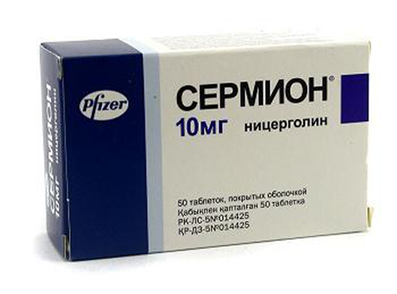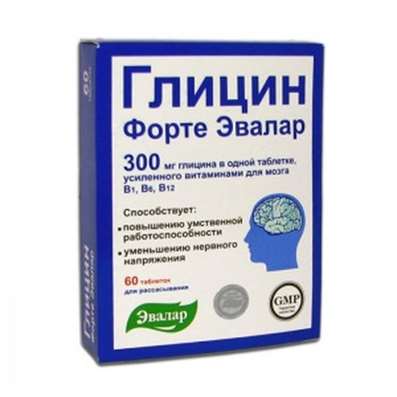Ladasten - fast and safe treatment of asthenia
24 Jul 2018
The saturation of modern life often takes away almost all the strength from people. Up to 40% of patients turn to general practitioners with complaints about the state of general frustration, emptiness, a sense of chronic fatigue. Such conditions are manifestations of asthenic syndrome, which is not always amenable to effective correction with the help of the usual methods: rest, playing sports, taking vitamins and nootropics. For a long time there was no available specific asthenia therapy. And only recently appeared the first anti-asthenic drug Ladasten.

- Why did you start developing a drug against asthenia?
"We have been working on the creation of a whole new group of psychotropic drugs for a long time. Back in the 1980s, it became clear to us that the existing tranquilizers of the benzodiazepine series have their limitations for use, and existing psychostimulants are practically banned. There are numerous immunostimulating agents, but they do not have other properties. Therefore, we are developing new medicines, with new mechanisms of action to bypass all the negative aspects that existing drugs have. And we have achieved some success. Ladasten (Bromantane), developed in our institute, does not have the negative effects of psychostimulants and tranquilizers and at the same time has high anti-asthenic activity.
- What is the drug Ladasten?
- Ladasten is a derivative of adamantane, which was invented in our institute long enough - back in the 70s. The primary idea of this drug was in the creation of a drug that would have actoprotective action. Actoprotectors are substances that must provide increased performance in extreme conditions. For the first time this preparation was synthesized under the guidance of prof. B.M. Pyatin, his further study was conducted by prof. I.S. Morozov. It was shown that this drug (then it was called bromantane) possesses psycho-stimulating and immunostimulating properties. Therefore, he immediately began to study in various pharmacological experiments. And when he was considered as a psychostimulant and compared with sidnocarb (a typical representative of this group of drugs), it turned out that Ladasten is much inferior to sindocarb in general stimulating properties, so further work with this drug was discontinued.
The drug received a new life when we began to study its psycho-stimulating properties from the pharmacogenetic positions. In the 1980s, we developed a model that allowed the most standardized inbred mice to see genetic differences in their reactions to emotional stress (for mice, such a stress is, for example, the transition from darkness to a brightly lit area). It turned out that one group of mice responds very well to standard psychostimulants (for example, amphetamine and sydnocarb), to which another group of animals does not respond. And on bromontane (Ladasten), the stimulation of behavior was answered by both groups of animals. This fact was difficult enough to explain. But we began to study this problem and realized that out of stress, stimulation only occurs in those animals that respond to traditional psychostimulants, and in those animals that do not respond, stimulation does not occur without stress. This led us to the unequivocal conclusion that the stimulation of the behavior of Ladasten is carried out in two ways - in addition to a mild psycho-stimulating action, this drug has an anxiolytic (anti-anxiety) effect, which prevents the reaction of fear. It was very interesting, because we got the world's first compound with psycho-stimulating and anti-anxiety action. Immunostimulating properties of the drug were also shown earlier.
- Why does Ladasten show such unique properties?
- We conducted very serious biochemical and neurochemical studies. Even involved a French firm that conducts a full complex of receptor analysis. We could not find the receptor on which Ladasten acts. Therefore, we studied various intracellular processes and saw that the secondary system of signal molecules plays an important role in the effect of the drug. The next stage was pharmacogenomic research. We studied the influence of Ladesten on the expression of 1116 genes and found a change in the activity of 16 genes. All the detected genes are associated with the functioning of the cells of the nervous system. Among these 16 genes, two were identified, the change in activity of which completely explained the observed pharmacological effects. Thus, Ladasten increases the expression of the tyrosine hydroxylase gene. This is a key enzyme that provides synthesis of catecholamines. This means that Ladasten, by increasing the activity of the tyrosine hydroxylase gene, increases the amount of this enzyme, which leads to the synthesis of more dopamine. This very well explains his mild psycho-stimulating effect. If you enter a typical psychostimulant, then there is a powerful psycho-stimulating effect, and then a strong exhaustion. When using Ladasten, the psychostimulating effect is weaker, but there is no depletion. Typical psychostimulants affect the release of dopamine from the storage vesicles and interact with the reverse dopamine transporter in the synaptic cleft. And Ladasten increases the synthesis of mediators associated with stimulation of the psyche. Thus, we are talking about an entirely new mechanism of action.
Analysis of other genes showed that Ladasten reduces the expression of the GABA transporter gene. This leads to an increase in the GABA content in the synaptic cleft, which in turn explains the anxiolytic (anti-anxiety) effect of the drug, since GABA is the main inhibitory mediator of the central nervous system of man.
Thus, pharmacogenomic studies have shown that the pharmacological effects of the drug are very well explained by the observed changes in gene expression. Now there is a clear idea that Ladasten affects the level of regulation of the activity of the genome of nerve cells. Studies continue, and it has already been shown that Ladasten increases the expression of the tyrosine hydroxylase gene, causing demethylation of its promoter site, and a transcription factor determining this effect is also revealed.
Thus, there is a sufficient understanding of what changes in cells causes Ladasten. And this confirms our confidence that the world's first drug has been obtained, which simultaneously causes an anti-anxiety and psychostimulating effect. Obviously, such a preparation fully meets the tasks of treating asthenic conditions.
- What side effects are possible with Ladasten?
- This issue was studied very deeply. Evaluation of toxicological characteristics of Ladasten showed that the drug is low-toxic. It does not have a locally irritating, allergic, mutagenic, teratogenic effect. Ladasten does not have a negative effect on the generative functions of rats, the growth and development of their offspring. Also, there were no effects that could indicate the possibility of developing a pathological predilection for him. The pharmacokinetics of the drug is well studied, and the dosage regimen is determined by data on its half-elimination from the body.
In clinical trials, all adverse events had only "possible" or "probable" connection with Ladasten therapy, were not significantly expressed and not.

 Cart
Cart





